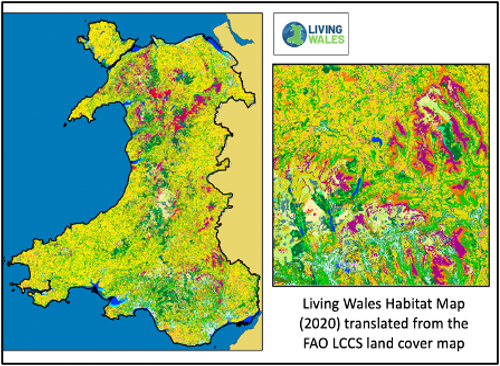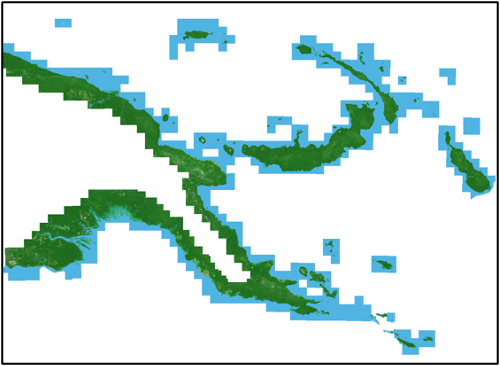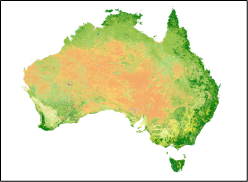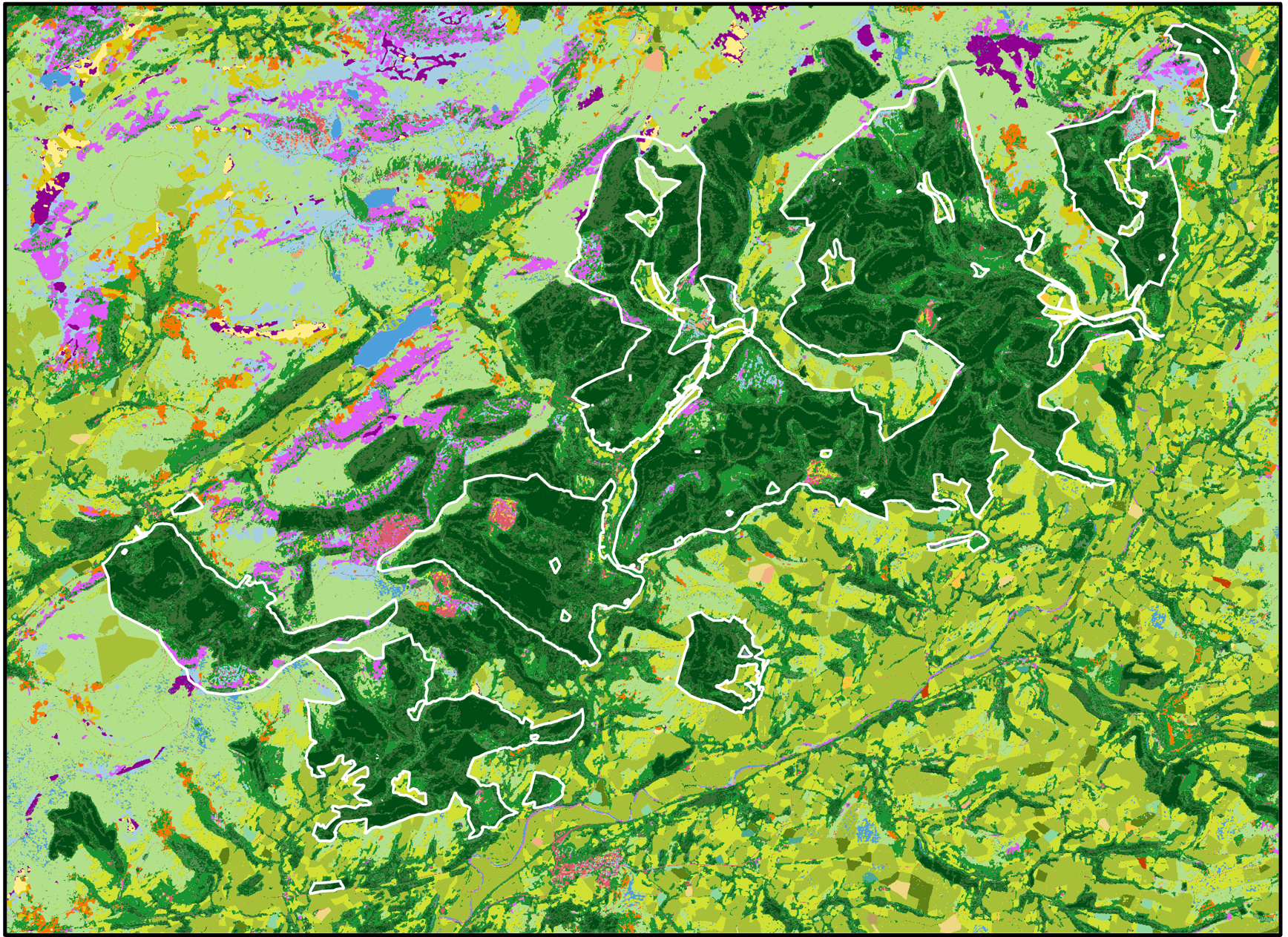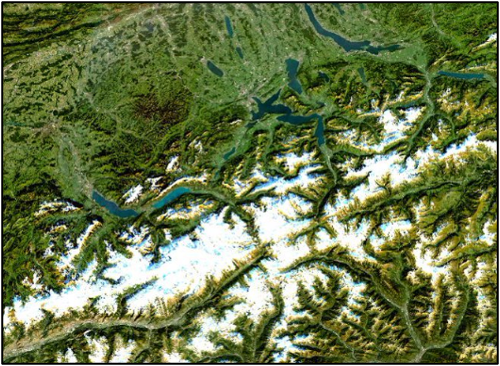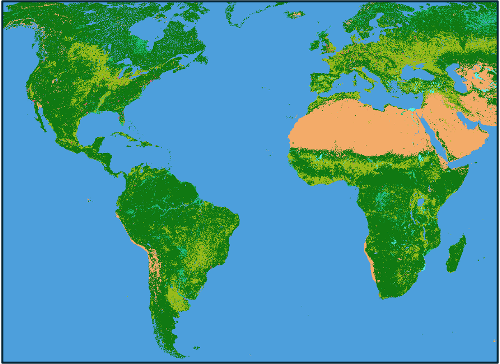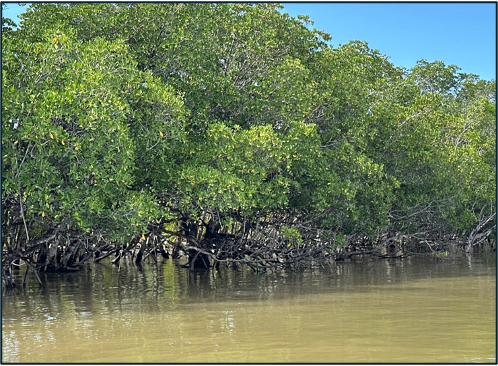
Land cover and habitats
Our land cover maps are all based on the globally-relevant Food and Agriculture Organisation (FAO) Land Cover Classification System (LCCS) taxonomy (Version 2.0).
Living Earth maps are unique in that they are and can be constructed a) from a diverse range of environmental descriptors obtained primarily from Earth observation data and b) across space and time as all environmental descriptors used in their construction have numeric units (e.g., m, %, time) or codes (e.g., plant species type). Whilst most national to global maps are produced from moderate (10-30 m) to coarse (100m – 1 km) resolution satellite data, maps with the same classes and associated descriptions can be generated to resolutions as high as sub-centimetre using data from sensors on board drones and aircraft. Maps can also be generated for periods before the satellite record through reconstruction from historical maps and into the future. Habitat maps can be generated through direct translation from land cover classes (e.g., woodland, water, urban) and/or by using contextual information (e.g., extent of coastal zones or floodplains or peat extent). Both land cover and habitat maps generated using Living Earth can be validated using the Earthtrack mobile application, with this facilitating a one-to-one correspondence with ground observations.
For Wales, maps of land cover and habitats have been generated from 2018 annually through the newly established Welsh Data Cube. The environmental descriptors used for their construction were retrieved or classified from Sentinel-1 radar and/or Sentinel-2 optical data.
Using the Living Earth classification approach within Australia’s Commonwealth Scientific and Industrial Research Organisation (CSIRO) Earth Analytics Science and Innovation (EASI) platform, maps of land cover have been generated for the coastal zone of Papua New Guinea mainland and islands.
Geoscience Australia’s Digital Earth Australia has generated 33 years of 30 m resolution land cover maps from the entire archive of Landsat sensor data acquired over the Australian continent and islands. These maps demonstrate the power of the Living Earth approach as a large diversity of changes associated with bush fires, urban expansion and coastal dynamics are revealed. To read more on this story, visit Digital Earth Australia .
For Wales, national maps of habitats have been generated, with these generated through direct translation from selected FAO LCCS land cover classes, more detailed classification of dominant plant communities within vegetated areas mapped as semi-natural and separation into habitat categories (where needed) by referencing contextual information including the Wales Peat Map and the original Phase 1 Habitat Survey’s delineation of coastal environments and degrees of grassland acidity. The maps have been generated through the newly established Welsh Data Cube and provide capacity for ongoing monitoring of habitats, annually but also subannually. To learn more, read the publication here .
Working with the Swiss Data Cube, which has been developed and is hosted by the University of Geneva, maps of land cover have been generated nationally as a proof of concept for a single year. The ambition is to fully embed the Living Earth system within the Swiss Data Cube in 2024.
Through the European Space Agency’s Climate Change Initiative (CCI) Biomass project, and partnering with the University of Leicester, ESA CCI Land Cover mapa at 300 m spatial resolution have been deconstructed into environmental descriptors and then reconstructed into a global map using the Living Earth approach. When reconstructing, a diverse range of other data layers have been used including mangrove extent (from Global Mangrove Watch) and tree canopy density. Further descriptions of these classes have been obtained using, for example, the CCI Biomass maps from 2010 and annually from 2018 to 2020).
